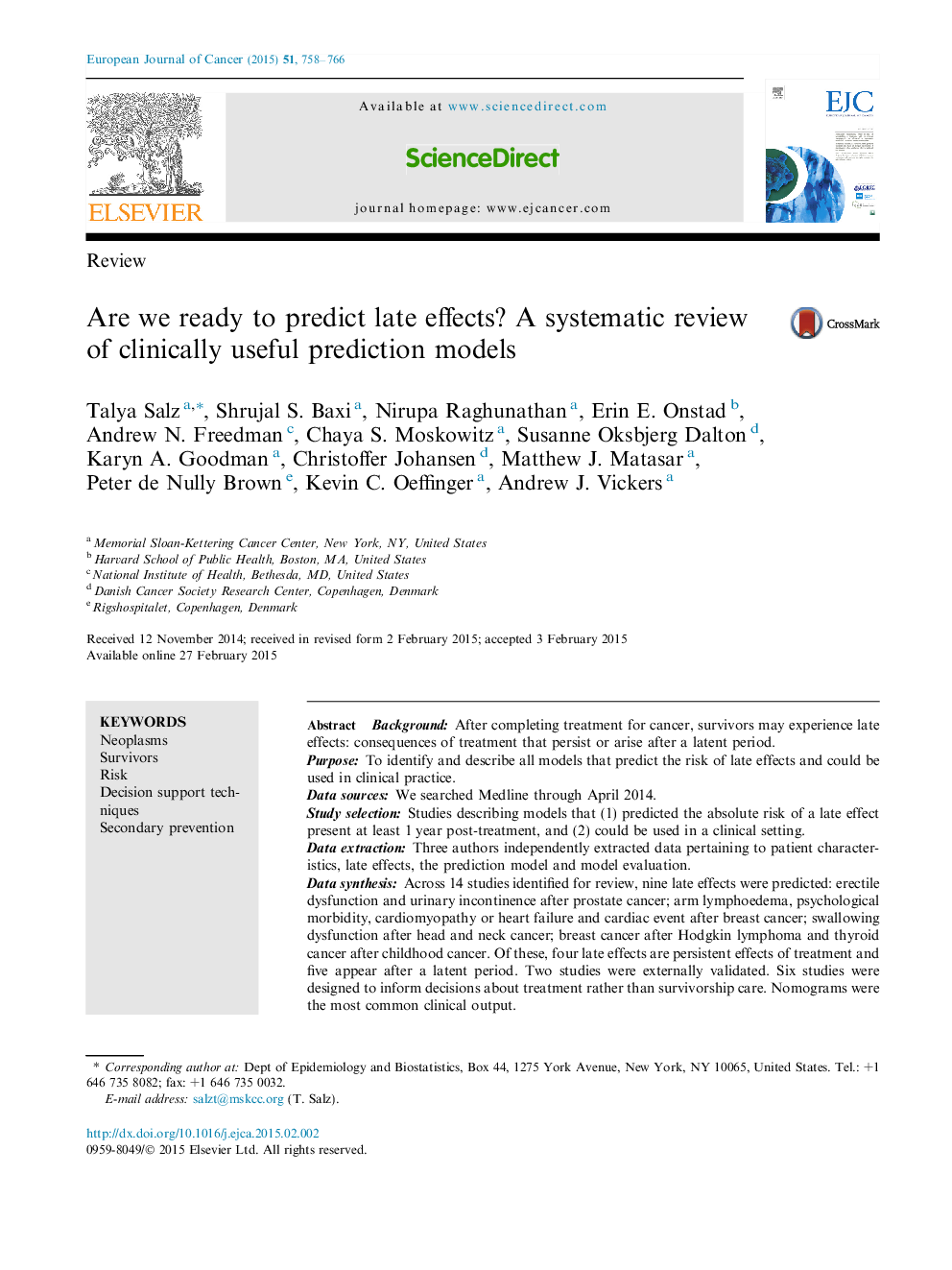| Article ID | Journal | Published Year | Pages | File Type |
|---|---|---|---|---|
| 2121908 | European Journal of Cancer | 2015 | 9 Pages |
BackgroundAfter completing treatment for cancer, survivors may experience late effects: consequences of treatment that persist or arise after a latent period.PurposeTo identify and describe all models that predict the risk of late effects and could be used in clinical practice.Data sourcesWe searched Medline through April 2014.Study selectionStudies describing models that (1) predicted the absolute risk of a late effect present at least 1 year post-treatment, and (2) could be used in a clinical setting.Data extractionThree authors independently extracted data pertaining to patient characteristics, late effects, the prediction model and model evaluation.Data synthesisAcross 14 studies identified for review, nine late effects were predicted: erectile dysfunction and urinary incontinence after prostate cancer; arm lymphoedema, psychological morbidity, cardiomyopathy or heart failure and cardiac event after breast cancer; swallowing dysfunction after head and neck cancer; breast cancer after Hodgkin lymphoma and thyroid cancer after childhood cancer. Of these, four late effects are persistent effects of treatment and five appear after a latent period. Two studies were externally validated. Six studies were designed to inform decisions about treatment rather than survivorship care. Nomograms were the most common clinical output.ConclusionDespite the call among survivorship experts for risk stratification, few published models are useful for risk-stratifying prevention, early detection or management of late effects. Few models address serious, modifiable late effects, limiting their utility. Cancer survivors would benefit from models focused on long-term, modifiable and serious late effects to inform the management of survivorship care.
